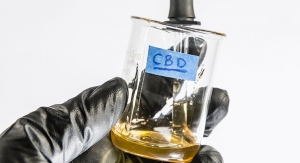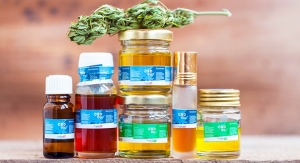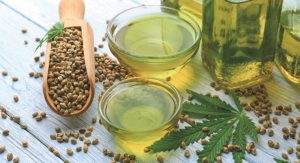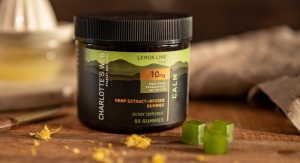By Todd Harrison, Venable11.05.19
Walking around Supply Side West this year I was not only struck by how many companies are hawking various forms of hemp/CBD ingredients, but also the wide variety of dietary ingredients I have never seen before, or that are being presented in new ways.
Nanotechnology continues to gain traction, but as I walked around I asked myself, “Are these ingredients NDIs? Are the ingredients reasonably expected to be safe? Are they Generally Recognized As Safe (GRAS) for use in conventional foods which are sold as functional foods?”
I decided to inquire about these various new ingredients, especially the nano-particle-size ingredients, including quite a few nano-sized CBD products. The answers I received left me dumbstruck.
One common answer for some of the ingredients was that “We are grandfathered so safety studies are not required.” So, I asked, “Do you know how a nano-sized-particle would act in the body?” And the only answer has been that it would be “more absorbable and effective.” Occasionally, I would receive the answer “we have self-determined GRAS.” These responses left me wondering if anyone understands the Dietary Supplement Health and Education Act (DSHEA), what constitutes an “old” dietary ingredient, and what GRAS means.
In the end, it became clear to me that this is still, unfortunately, a Wild West industry chasing after fool’s gold with no idea whether the highly-standardized ingredients and nano-particle ingredients are actually safe for use in food or dietary supplements, other than “we have never had a safety issue that we are aware of.”
NDI & Safety Reviews
I thought this might be a good time to review what is a new dietary ingredient and what is not, and what really is required for GRAS. I want to simplify this discussion on what is and what is not an NDI. If an ingredient was not marketed prior to Oct. 14, 1994 it is an NDI subject to notification unless available in the
food supply.
This definition is quite simple. We do not need to review FDA’s draft guidance to determine whether a nano-particle dietary ingredient was marketed prior to Oct. 14, 1994, because we all know the answer is that it was not.
Moreover, basic chemistry and physiology teaches us that nano-sized particles will act differently in the body than normal-sized molecules. There may be a cascade effect that could be either good or bad. For instance, it is my understanding from people I trust on toxicology issues that nano-sized CBD is likely not as safe as CBD in general. Thus, even if we can establish that CBD is safe, it might not be safe as a nano-sized particle.
This is basic chemistry. Yet, the industry is not asking the safety question; all we hear is that it’s more absorbable, therefore it must be more effective. And that is simply not true. Similarly, an isolated constituent may have a different safety profile compared to when it is part of the whole plant. Thus, many herbalists believe in the entourage effect of the whole herb as opposed to the isolated chemical.
Indeed, we know that bioactivity can be upregulated or downregulated by a particular constituent based on the presence of other molecules. But hey, the constituent is part of a grandfathered dietary ingredient or food, and therefore a notification is not required, right?
In essence, the common default position is to make the legal argument instead of doing the right thing by conducting the necessary safety assessment on the ingredient. I am fairly certain most highly standardized extracts are safe. And I can make a reasonable legal argument that if the constituent is present in the product at levels that have been generally available in pre-1994 supplements, then an NDIN is not necessary. But is that in fact the right answer? I would argue no, it’s not.
For sure, we overcome the issue related to whether the structure of the law permits the marketing of the ingredient, but it ignores the substantive part of the laws about whether the ingredient poses a significant or unreasonable risk of harm if it is an “old” dietary ingredient, or the ingredient has a reasonable expectation of safety if it is an NDI that is not subject to notification.
Instead, it appears the default position is the original dietary ingredient is safe, therefore highly standardized extracts or isolated constituents must also be safe, which may be true but it has never been actually studied. This line of logic continues, well if the molecule is safe then the nano particle must be safe, which again may or may not be true. Without the appropriate toxicology work being done we will never know the answer.
Of course, FDA is a relatively small agency and does not have the ability to enforce all aspects of every law. Thus, the agency relies on its enforcement discretion until it becomes aware of an issue. However, that does not mean an ingredient is safe. Rather, it simply means FDA doesn’t have the resources to act.
Magic GRAS
Then there is the magic of self-affirmed GRAS; self-affirmed GRAS seems to cure all. If I have a self-affirmed GRAS position or paper, I can market to my heart’s content. Unfortunately, the vast majority of self-affirmed GRAS positions I have seen over the years are as good as the paper they were written on.
To make things worse, companies are told by consultants within the industry not to file GRAS notifications and that they can rely on private data. But how can you have general recognition if the data is not publicly available and is limited to a few choice people? You can’t. Yet, companies are told by consultants and lawyers you can, and that is how DMAA became, prior to its downfall, a popular sports nutrition ingredient.
Indeed, DMAA is the classic case of form over substance. A company is told by a lawyer that it’s a constituent of a plant and therefore may be marketed without an NDIN. When that legal argument failed, the company fell back on “the ingredient is GRAS, therefore we may market it.”
To this day, I am not quite sure why anyone thought the limited safety data established GRAS, but the 11th Circuit Court of Appeals agreed with FDA’s assessment mainly because the agency said it was not GRAS. Indeed, in shorthand, how can an ingredient be GRAS if the experts at FDA disagree with that assessment? Indeed, by definition if experts disagree, one cannot have general recognition. With that said, FDA could be wrong, and if you have a strong bench of well-respected toxicologists you may be able to overcome the issue in court. Then again, you may not.
Recently, a company marketing a beverage learned that its supplier’s self-determined GRAS did not pass FDA muster, leaving that company with not many choices other than to remove the ingredient. The fact is that both the company and the supplier are at fault, as neither one critically assessed the self-GRAS determination. I am sure they had lawyers and consultants who told them to the contrary.
From my perspective, if the self-determined GRAS dossier does not meet FDA’s requirements, my advice is go back, do a proper gap analysis, and do the necessary studies. But it seems we are too often more interested in shortcuts than doing the work the correct way.
Here is the best way to handle self-determined GRAS: is the data sufficient to satisfy FDA? If it is, file the notification, unless there is a legitimate reason not to. If it is not filed, take it to an independent toxicologist (one who did not participate in the drafting of the GRAS dossier, or in the expert panel) to assess the document and provide a gap analysis. If it passes that review, then rely on it.
In the end, I can sum up my positions this way: do the right thing, and do your job. Let’s stop chasing fool’s gold and stop worrying about whether there is a legal argument available whereby companies can avoid notification, or whether the ingredient is precluded. Go straight to “does it meet the applicable safety standard?” Stop looking for a way around it.
Todd Harrison
Venable
Todd Harrison is partner with Venable, which is located in Washington, D.C. He advises food and drug companies on a variety of FDA and FTC matters, with an emphasis on dietary supplement, functional food, biotech, legislative, adulteration, labeling and advertising issues. He can be reached at 575 7th St. NW, Washington, D.C. 20004, Tel: 202-344-4724; E-mail: taharrison@venable.com.
Nanotechnology continues to gain traction, but as I walked around I asked myself, “Are these ingredients NDIs? Are the ingredients reasonably expected to be safe? Are they Generally Recognized As Safe (GRAS) for use in conventional foods which are sold as functional foods?”
I decided to inquire about these various new ingredients, especially the nano-particle-size ingredients, including quite a few nano-sized CBD products. The answers I received left me dumbstruck.
One common answer for some of the ingredients was that “We are grandfathered so safety studies are not required.” So, I asked, “Do you know how a nano-sized-particle would act in the body?” And the only answer has been that it would be “more absorbable and effective.” Occasionally, I would receive the answer “we have self-determined GRAS.” These responses left me wondering if anyone understands the Dietary Supplement Health and Education Act (DSHEA), what constitutes an “old” dietary ingredient, and what GRAS means.
In the end, it became clear to me that this is still, unfortunately, a Wild West industry chasing after fool’s gold with no idea whether the highly-standardized ingredients and nano-particle ingredients are actually safe for use in food or dietary supplements, other than “we have never had a safety issue that we are aware of.”
NDI & Safety Reviews
I thought this might be a good time to review what is a new dietary ingredient and what is not, and what really is required for GRAS. I want to simplify this discussion on what is and what is not an NDI. If an ingredient was not marketed prior to Oct. 14, 1994 it is an NDI subject to notification unless available in the
food supply.
This definition is quite simple. We do not need to review FDA’s draft guidance to determine whether a nano-particle dietary ingredient was marketed prior to Oct. 14, 1994, because we all know the answer is that it was not.
Moreover, basic chemistry and physiology teaches us that nano-sized particles will act differently in the body than normal-sized molecules. There may be a cascade effect that could be either good or bad. For instance, it is my understanding from people I trust on toxicology issues that nano-sized CBD is likely not as safe as CBD in general. Thus, even if we can establish that CBD is safe, it might not be safe as a nano-sized particle.
This is basic chemistry. Yet, the industry is not asking the safety question; all we hear is that it’s more absorbable, therefore it must be more effective. And that is simply not true. Similarly, an isolated constituent may have a different safety profile compared to when it is part of the whole plant. Thus, many herbalists believe in the entourage effect of the whole herb as opposed to the isolated chemical.
Indeed, we know that bioactivity can be upregulated or downregulated by a particular constituent based on the presence of other molecules. But hey, the constituent is part of a grandfathered dietary ingredient or food, and therefore a notification is not required, right?
In essence, the common default position is to make the legal argument instead of doing the right thing by conducting the necessary safety assessment on the ingredient. I am fairly certain most highly standardized extracts are safe. And I can make a reasonable legal argument that if the constituent is present in the product at levels that have been generally available in pre-1994 supplements, then an NDIN is not necessary. But is that in fact the right answer? I would argue no, it’s not.
For sure, we overcome the issue related to whether the structure of the law permits the marketing of the ingredient, but it ignores the substantive part of the laws about whether the ingredient poses a significant or unreasonable risk of harm if it is an “old” dietary ingredient, or the ingredient has a reasonable expectation of safety if it is an NDI that is not subject to notification.
Instead, it appears the default position is the original dietary ingredient is safe, therefore highly standardized extracts or isolated constituents must also be safe, which may be true but it has never been actually studied. This line of logic continues, well if the molecule is safe then the nano particle must be safe, which again may or may not be true. Without the appropriate toxicology work being done we will never know the answer.
Of course, FDA is a relatively small agency and does not have the ability to enforce all aspects of every law. Thus, the agency relies on its enforcement discretion until it becomes aware of an issue. However, that does not mean an ingredient is safe. Rather, it simply means FDA doesn’t have the resources to act.
Magic GRAS
Then there is the magic of self-affirmed GRAS; self-affirmed GRAS seems to cure all. If I have a self-affirmed GRAS position or paper, I can market to my heart’s content. Unfortunately, the vast majority of self-affirmed GRAS positions I have seen over the years are as good as the paper they were written on.
To make things worse, companies are told by consultants within the industry not to file GRAS notifications and that they can rely on private data. But how can you have general recognition if the data is not publicly available and is limited to a few choice people? You can’t. Yet, companies are told by consultants and lawyers you can, and that is how DMAA became, prior to its downfall, a popular sports nutrition ingredient.
Indeed, DMAA is the classic case of form over substance. A company is told by a lawyer that it’s a constituent of a plant and therefore may be marketed without an NDIN. When that legal argument failed, the company fell back on “the ingredient is GRAS, therefore we may market it.”
To this day, I am not quite sure why anyone thought the limited safety data established GRAS, but the 11th Circuit Court of Appeals agreed with FDA’s assessment mainly because the agency said it was not GRAS. Indeed, in shorthand, how can an ingredient be GRAS if the experts at FDA disagree with that assessment? Indeed, by definition if experts disagree, one cannot have general recognition. With that said, FDA could be wrong, and if you have a strong bench of well-respected toxicologists you may be able to overcome the issue in court. Then again, you may not.
Recently, a company marketing a beverage learned that its supplier’s self-determined GRAS did not pass FDA muster, leaving that company with not many choices other than to remove the ingredient. The fact is that both the company and the supplier are at fault, as neither one critically assessed the self-GRAS determination. I am sure they had lawyers and consultants who told them to the contrary.
From my perspective, if the self-determined GRAS dossier does not meet FDA’s requirements, my advice is go back, do a proper gap analysis, and do the necessary studies. But it seems we are too often more interested in shortcuts than doing the work the correct way.
Here is the best way to handle self-determined GRAS: is the data sufficient to satisfy FDA? If it is, file the notification, unless there is a legitimate reason not to. If it is not filed, take it to an independent toxicologist (one who did not participate in the drafting of the GRAS dossier, or in the expert panel) to assess the document and provide a gap analysis. If it passes that review, then rely on it.
In the end, I can sum up my positions this way: do the right thing, and do your job. Let’s stop chasing fool’s gold and stop worrying about whether there is a legal argument available whereby companies can avoid notification, or whether the ingredient is precluded. Go straight to “does it meet the applicable safety standard?” Stop looking for a way around it.
Todd Harrison
Venable
Todd Harrison is partner with Venable, which is located in Washington, D.C. He advises food and drug companies on a variety of FDA and FTC matters, with an emphasis on dietary supplement, functional food, biotech, legislative, adulteration, labeling and advertising issues. He can be reached at 575 7th St. NW, Washington, D.C. 20004, Tel: 202-344-4724; E-mail: taharrison@venable.com.


























